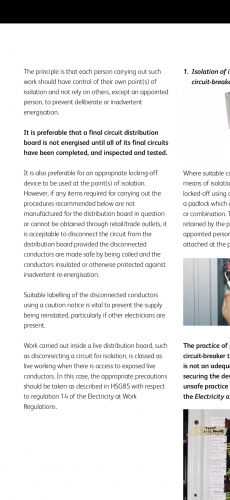 Is this sufficient for isolation on a bit of equipment unable to be locked off. Cores removed from supply and tapped up according with a label?
Is this sufficient for isolation on a bit of equipment unable to be locked off. Cores removed from supply and tapped up according with a label? We're about to take you to the IET registration website. Don't worry though, you'll be sent straight back to the community after completing the registration.
Continue to the IET registration site